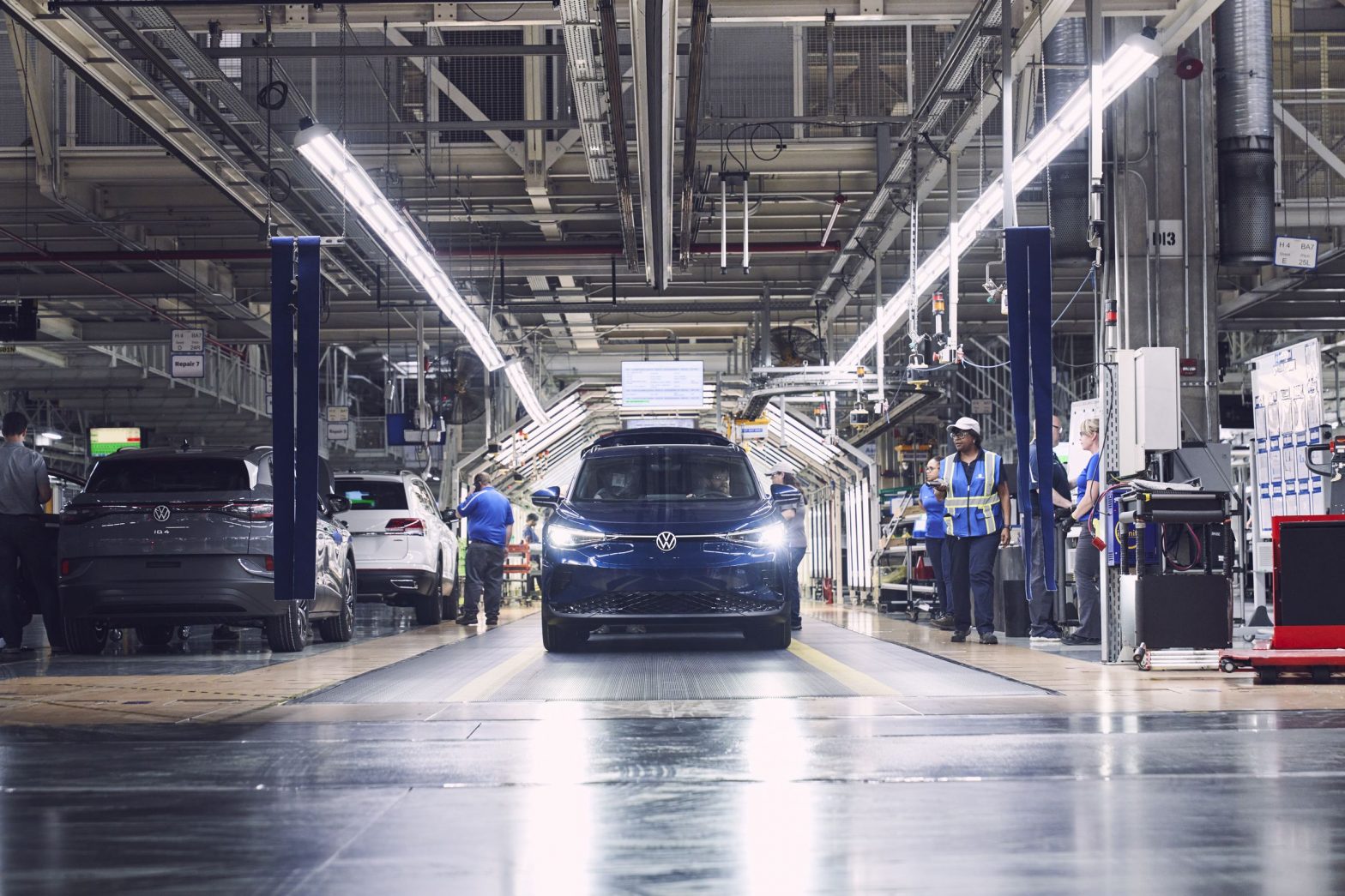/
The plant, which is a joint venture with VW and its battery spinoff Power Co, will be located in the southwestern Ontario city of St. Thomas, midway between Toronto and Windsor. The German automaker has said it will spend $20 billion building EV battery plants across the globe.
:format(webp)/cdn.vox-cdn.com/uploads/chorus_asset/file/23898753/220515VW03_AMBLY_1575.jpg)
Volkswagen announced that its first gigafactory in North America will be located in the city of St. Thomas in the Canadian province of Ontario. By establishing a battery plant in North America, Volkswagen hopes to meet a major requirement to enable its EVs to be eligible for the US federal tax credit of $7,500.
The St. Thomas factory will be a joint venture between VW and Power Co, a new independent company created by the automaker to oversee its massive $20 billion battery initiatives. After starting construction on two other gigafactories, this will be the third plant worldwide and PowerCo’s first cell factory in North America. Production at the St. Thomas factory is set to kick off in 2027.
According to VW, the St. Thomas plant “will equip the Group brand’s BEVs in the region with cutting-edge battery cells.” The company signed a memorandum of understanding with Canadian Prime Minister Justin Trudeau’s government last August that focuses on “battery value creation and raw material security in order to promote e-mobility in the country.”
In 2021, VW unveiled plans to build six battery cell production plants in Europe by 2030, including the facility in Salzgitter and one in Skelleftea, Sweden. A third plant is under construction in Valencia, Spain, and the fourth factory will be based in Eastern Europe. The plants will eventually have a production capacity of 240 gigawatt-hours a year.
Starting in 2023, VW plans to roll out a new unified prismatic cell design of its batteries that will be installed across the automaker’s brands. The goal is to have this unified cell design powering up to 80 percent of VW’s electric vehicles by 2030. VW also has contracts with two other major battery producers, Samsung and CATL. And the company is backing a startup based in San Jose, California, QuantumScape, which is working on more energy-efficient solid-state batteries.
VW is also building electric trucks and SUVs under its new Scout brand, with a specific focus on American car buyers. The company recently announced plans to build a vehicle assembly plant in South Carolina. In a statement, The automaker’s EV lineup for North America consists only of the ID.4 SUV. Soon to be released include the ID.7 sedan and ID Buzz electric minivan. VW Group CEO Oliver Blume said the Ontario gigafactory will be crucial to that effort.
“Our North American strategy is a key priority in our 10-point-plan that we’ve laid out last year,” Blume said. “With the decisions for cell production in Canada and a Scout site in South Carolina, we’re fast-forwarding the execution of our North American strategy.”
The Ontario project is part of VW’s efforts to comply with the strict rules set by the Biden administration’s Inflation Reduction Act (IRA), which lets EVs assembled in North America qualify for a $7,500 tax credit. Although the IRA also outlines battery sourcing requirements that discourage dealings with “foreign entities of concern,” like China, we still don’t know how the Treasury Department will interpret these rules until sometime later this month.
The factory is also part of a host of new EV facilities that are expected to come online in the coming years. Globally, battery production is expected to grow from 95.3 gigawatt-hours (GWh) in 2020 to 410.5 GWh in 2024, according to GlobalData, a data and analytics company.
Ford has said its three new battery plants will enable 129 GWh a year of production capacity. General Motors is planning four new battery factories in the US for a total annual capacity of 140 GWh, while Stellantis is planning a new factory in Indiana, which will have an initial annual production capacity of 23 GWh.
